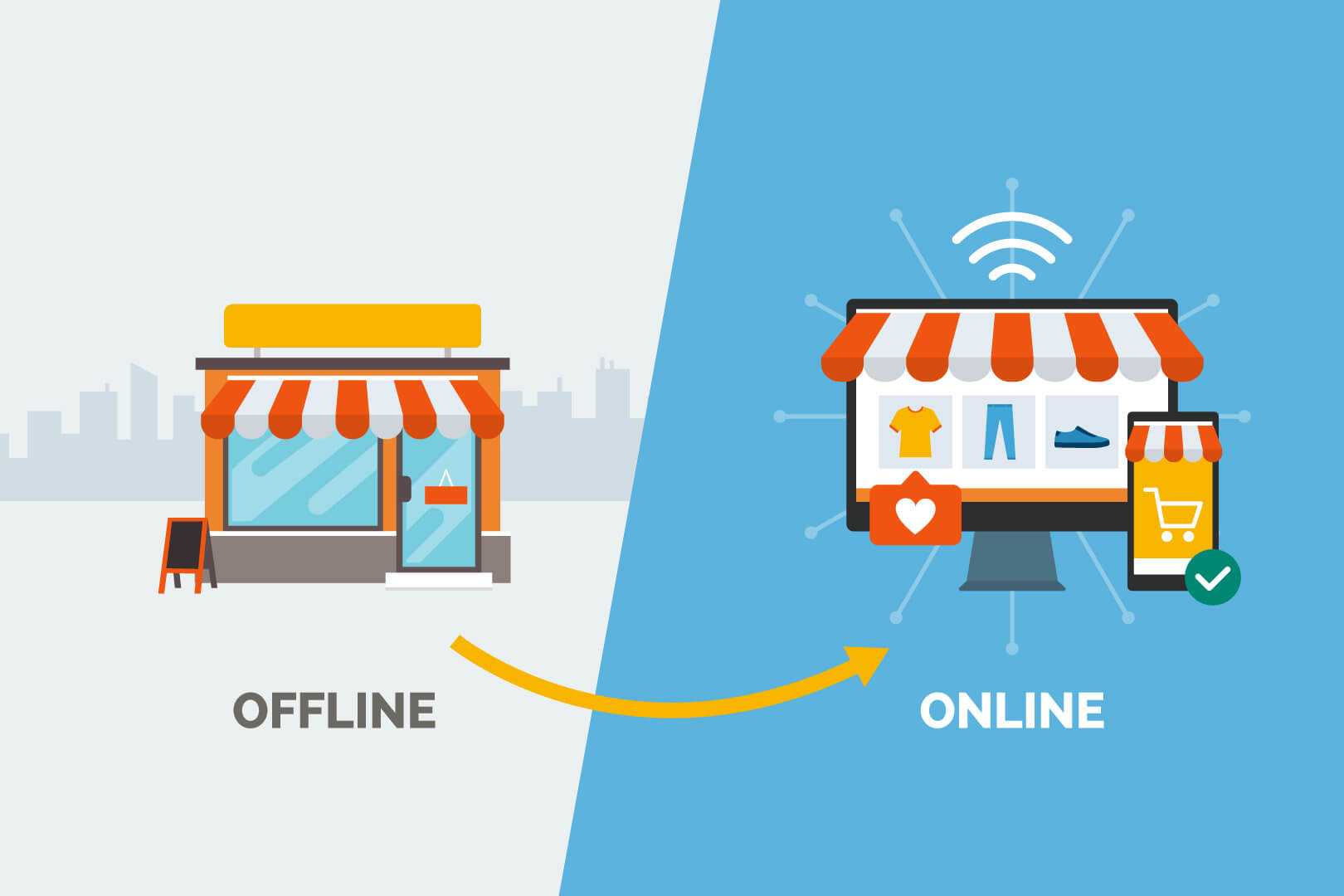6 min read
As COVID-19 reshapes our society, people are increasingly turning to online shopping for their needs and wants. Recent data shows that the pandemic has accelerated the shift away from brick and mortar to e-commerce by roughly five years.
Although the effects of the pandemic are now gradually subsiding, this shift isn’t letting up. Many retailers expect to see a continued increase in online demand throughout 2021 and beyond.
A McKinsey survey found that companies are now three times more likely to conduct 80 percent of their customer interactions digitally than before the pandemic. In addition, current figures predict that global e-retail revenues will rise to US$6.54 trillion in 2022, up US$3.07 trillion from 2019.
This trend makes right now the perfect time to grow your online presence and get ahead of the curve. However, moving from offline to online can be challenging, especially for digital non-natives. Here are 8 critical things to consider before you get started.
1. How You Will Manage Your Data
Data is a valuable resource and a cornerstone of digital transformation. It can provide you with actionable insights into customers and their behaviors, enabling you to make intelligent business decisions that drive your brand forward.
When you move from offline to online, the amount of data your brand collects will grow significantly. How you manage this data is crucial. First, determine which data is authentic, useful, and accurate. Next, invest in a data science platform or customer data platform (CDP) to collect and unify all of your data in real time.
2. What You Know About Your Customers
Going online presents an opportunity to revisit and expand on what you already know about your customers. Unifying your data in a CDP enables you to develop a 360-degree view of the customer and better understand their behaviors, preferences, patterns and trends, creating more accurate customer profiles.
To stay ahead of the competition, use AI technology to enhance your data analytics capabilities. Machine learning tools can dig deeper into these insights to create effective customer segments that you can target with relevant ads and offers. You can also use machine learning to predict future customer behavior, in order to focus on high-value customers.
3. The Advantages of an Omnichannel Approach
Going digital means your channels of customer engagement will multiply. Apart from your e-commerce site, these will include social media, mobile, email, apps, and more. Rather than treat each channel independently, customers today expect companies to offer a consistent experience across all the channels. Therefore, adopting an omnichannel approach is essential to winning today’s consumers.
Omnichannel marketing is all about being customer-centric. It involves understanding all of the channels your customers use to interact with your brand, as well as when and how they use each channel. As a prospect or existing customer hops between your online and offline channels, each interaction is taken into account, and requires consistent and personalized content to ensure a seamless experience.
The omnichannel approach that leverages customer journey mapping tools can increase purchase frequency by as much as 250 percent and retention rates by 90 percent.
4. How You Will Integrate New Technology
Transitioning to online commerce can be complex as new technologies are thrown into the mix. A key challenge will be integrating these new technologies with your existing systems, such as your CRM, inventory management, payments, and customer service. Getting it right is crucial for creating business efficiency and delivering an excellent customer experience.
It is essential you choose suitable systems and solutions for your business and objectives. Think about what you need, from a content management system (CMS) to marketing automation tools. You also want to ensure a smooth implementation process. This means providing adequate staff training, and calling in a specialist if needed.
5. The Best Way to Build Your E-Commerce Store
Setting up an online store requires careful planning. There are two main options to consider: a third-party commerce platform or marketplace such as Amazon or Alibaba, or building your own site from scratch. Each has its pros and cons.
Third-party e-commerce platforms already have a big customer base, so they can give your brand more exposure. They are also easy to manage as things like logistics and marketing are often taken care of. By comparison, setting up your own can be more work, but the rewards are greater control, a stronger brand image, and a competitive edge. Website builder platforms, such as Shopify and Squarespace, can be a good compromise.
6. Your Approach to Supply Chains and Logistics
The COVID-19 pandemic exposed the supply and logistical inefficiencies of many online retailers. They simply were not set up to deal with the sudden growing orders coupled with the closure of overseas suppliers. Nor were they able to cope with the delivery delays caused by increased demand.
To make your business more resilient, think carefully about your supply processes. Will you use international suppliers or keep things local? Will you ship nationally or overseas? What will your returns policy be? In addition, consider investing in smart inventory management tools so you can make more accurate demand predictions.
7. How Your Customers Will Make Payments
When you sell online, you will no longer be able to accept over-the-counter payments. Instead, you need to set yourself up to accept payments online through multiple payment methods such as credit and debit cards, Apple Pay and PayPal. The more options you offer customers, the better.
For this, you need a payments gateway and merchant account. A payment gateway facilitates online transactions and allows you to process them securely. A merchant account holds and verifies payments before depositing them into your business account.
To make things easier, some website platforms have inbuilt payment systems that do not require you to set up a merchant account.
8. The Importance of Online Security
Cybersecurity is one of the most important things to consider in e-commerce. It protects private and sensitive customer data, keeps your money safe from financial fraud and scams, and ensures secure payments.
Without recognizable online security systems and trust badges on your site, customers may be wary of buying from you and look to buy elsewhere. In fact, one study found that 60 percent of customers did not buy because there were no trust badges on a site.
Moving from a brick-and-mortar store to an online business model isn’t easy, but it is key to staying ahead and staying in the game. Carefully planning is crucial. By considering the important elements above, thinking about your overall business strategy, and being pragmatic and measured in your approach, you can make a smooth transition. Finally, don’t forget to spread the word that you are now online.
* Want to find out more about how our intelligent marketing software can help you stay ahead in e-commerce? Contact our team today for an exclusive consultation.



-1.png?width=3000&height=1834&name=SuperLike_%E5%B7%A5%E4%BD%9C%E5%8D%80%E5%9F%9F%201%20(1)-1.png)